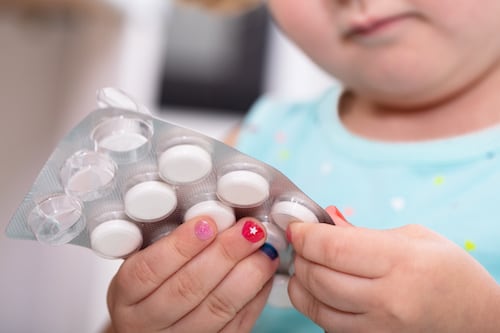Child-resistant packaging is an essential component of product safety, particularly in industries where products can pose risks to curious children.
This specialized packaging is designed to prevent young children from accessing and potentially harming themselves with hazardous or harmful substances.
Let’s explore the significance of child-resistant packaging, its applications in various industries, and the compelling reasons why it is crucial for protecting children and promoting responsible practices.
The Importance of Child-Resistant Packaging
Child-resistant packaging, often abbreviated as CR packaging, is designed to thwart young children’s access to the contents of the package. Its primary goal is to prevent accidental ingestion or exposure to potentially dangerous substances, including medications, household chemicals, and tobacco products.
The significance of child-resistant packaging can be summarized in five key points:
Point 1: Child Safety
The primary objective of child-resistant packaging is to safeguard the well-being of children. It reduces the likelihood of unintentional ingestion or contact with harmful products, which can result in serious injuries or even fatalities.
Point 2: Compliance with Regulations:
In many countries, there are strict regulations governing the use of child-resistant packaging for specific products, such as medications and hazardous chemicals. Businesses must adhere to these regulations to ensure legal compliance and protect consumers.
Point 3: Prevention of Accidental Poisoning
Child-resistant packaging helps prevent cases of accidental poisoning, which can lead to emergency room visits and costly medical bills. It alleviates the burden on healthcare systems and minimizes the emotional toll on families.
Point 4: Public Health
Promoting the use of child-resistant packaging contributes to overall public health. It reduces the incidence of poisonings and associated health risks, benefiting society as a whole.
Point 5: Corporate Responsibility
Companies that prioritize child-resistant packaging demonstrate corporate responsibility by actively working to protect children and prevent accidents related to their products. This commitment enhances a brand’s reputation and builds consumer trust.
Applications of Child-Resistant Packaging
Child-resistant packaging is utilized in various industries where the safety of children is a primary concern. These industries include, but are not limite to:
Medications and Pharmaceuticals
Child-resistant packaging is especially critical in the pharmaceutical industry. Medications, including over-the-counter and prescription drugs, must be kept out of the reach of children. Child-resistant caps and blister packs are commonly used to prevent accidental ingestion, ensuring that children cannot access the contents without the help of an adult.
Household Chemicals
Many household chemicals, such as packaged chemical fertilizers, cleaning products, detergents, and pesticides, are potentially harmful if ingested or mishandled.
Child-resistant packaging for these products typically includes secure closures, trigger mechanisms, or locking mechanisms that require dexterity and strength to open. This reduces the risk of children gaining access to the contents.
Tobacco and E-Cigarettes
Tobacco and e-cigarette products contain nicotine, a highly toxic substance. To protect children from nicotine poisoning, these products are often required to use child-resistant packaging. Child-resistant caps and mechanisms are used to keep young children from opening these products and being exposed to the hazardous contents.
Cannabis
The growing cannabis industry also recognizes the importance of child-resistant cannabis packaging. Edible cannabis products, such as edible gummies and chocolates, often use child-resistant pouches to prevent children from accidentally consuming these items, which can result in adverse effects.
Hazardous Materials
Industrial and commercial chemicals, as well as household products like lighter fluid or fuel, must be stored and transported
in child-resistant packaging to prevent accidents and injuries.
Top Reasons to Use Child-Resistant Packaging
Preventing Accidental Poisoning: The primary and most critical reason to use child-resistant packaging is to prevent accidental poisonings. Young children are naturally curious and often explore their surroundings by putting objects in their mouths. Child-resistant packaging acts as a vital barrier, ensuring that harmful substances are inaccessible.
Regulatory Compliance: In many countries, child-resistant packaging is mandate by law for specific products. Adhering to these regulations is not only a legal requirement but also a demonstration of a business’s commitment to safety and compliance.
Reducing Liability: Businesses that fail to use child-resistant packaging for products that require it may face legal repercussions in the event of accidents involving children. Such incidents can lead to costly lawsuits and damage a company’s reputation.
Enhancing Consumer Trust: Companies that invest in child-resistant packaging send a clear message that they prioritize the safety of their customers, particularly children. This commitment enhances consumer trust and loyalty.
Protecting Brand Reputation: A brand’s reputation is a valuable asset. Using child-resistant packaging is a responsible practice
that can protect a brand’s image and integrity, even in the face of unforeseen accidents.
Public Health and Safety: Employing child-resistant packaging supports public health initiatives and reduces the burden on healthcare systems by preventing accidental poisonings and related healthcare costs.
Peace of Mind for Parents and Caregivers: Child-resistant packaging provides peace of mind to parents and caregivers, knowing that
children are less likely to access harmful substances accidentally. This sense of security is invaluable.
Innovation and Product Improvement: The development and improvement of child-resistant packaging have led to innovative solutions and advancements in the packaging industry. Companies that invest in these innovations contribute to the ongoing improvement of safety standards.
Conclusion
Child-resistant packaging is a critical component of ensuring the safety of young children, especially in industries where products can pose risks. The importance of child-resistant packaging cannot be overstate, as it helps prevent accidents, accidental poisonings, and related health risks.
Adhering to regulatory requirements for child-resistant packaging is not only a legal obligation but also a moral responsibility that safeguards children’s lives and health. It enhances brand reputation, fosters consumer trust, and contributes to the broader goal of promoting responsible practices and safety within society.
Child-resistant packaging is, without a doubt, an essential element of a safer, more secure world for our children.




